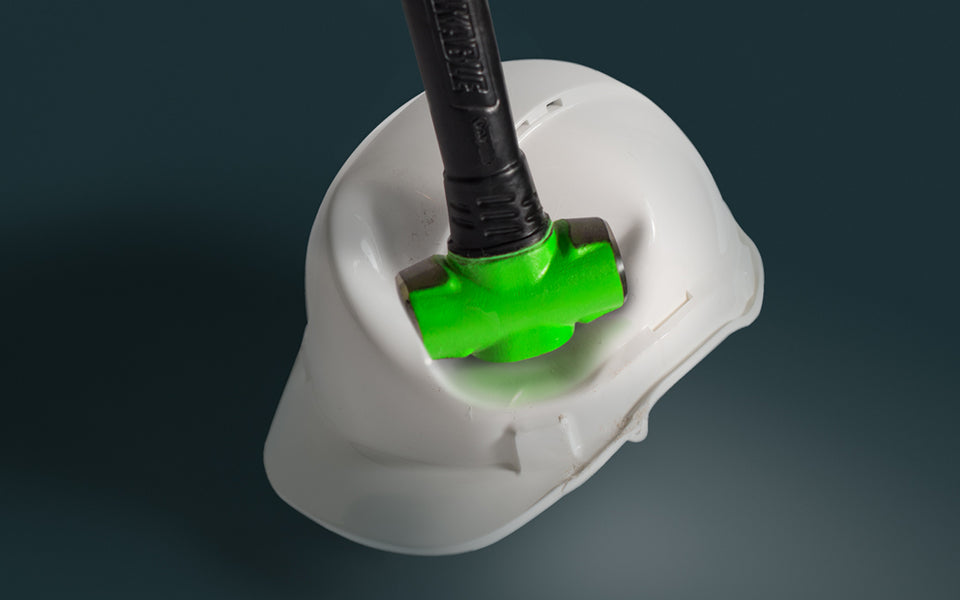In order to stop dropped and falling objects when working at height, an understanding of the primary causes of the incidents can help conduct more thorough risk assessments and avoid overlooking some fundamental reasons why drops happen.
Here are the top 10 causes of falling or dropped objects in the workplace:
1. Inadequate Risk Assessment
Failure to identify dropped object hazards.
It is important to identify potential hazards as this can dramatically reduce the risk of an incident occurring if appropriate measures are taken. A risk assessment can identify potential energy sources, index tools and equipment required for each task and increase worker awareness about the potential dangers of falling objects.
2. Human Factors
Operator error, poor behaviour, complacency, neglect.
Inadequate training or awareness of hazards, operator error, complacency, neglect and poor reporting can result in compromised safety. Tool tethering toolbox talks, workshops and training give an outline of falling object hazards and help create a more competent, safety-conscious workforce.
3. Inadequately Stored or Secured Tools and Equipment
No tool lanyards or tethers being used. No containment of loose items.
Hand tools, power tools, mobile phones, even Personal Protective Equipment (PPE) are all examples of equipment and tools that should be securely tethered with tool lanyards to prevent them becoming falling objects.
4. Inadequate Procedures
Bad planning, no management of change.
As with risk assessments, if management of change process isn't in place to identify and control risk from the changes occurring in the workplace, unidentified and new risks may be missed.
5. Failed Fixtures and Fittings
Corrosion, vibration, poor design, selection or improper installation.
Corrosion, vibration, poor design, selection or improper installation of fixtures and fittings can lead to failure. Failed fixtures and fittings can and will often dislodge and fall. Regular inspection helps monitor any deterioration so that appropriate measures can be taken.
6. Poor Housekeeping
Pre-existing hazards from previous tasks.
Workplaces and toolkits should be kept organised and tidy. Loose tools and equipment left around pose an unexpected risk to other workers. NLG has a number of systems to support and encourage best practice tool safety procedures so that the user is alerted to any missing tools before leaving their work zone.
7. Collisions and Snagging
Lifting, travelling equipment, tag lines, service loops.
Moving equipment, lifting and tag lines can all cause snagging or collision. The impact of collisions can cause breakage or create other dropped objects and debris.
8. Inadequate Inspection, Repair and Maintenance
Ignoring unsafe conditions.
Regular inspections and maintenance repair schedules can help identify corrosion, damages, wear and tear to equipment and structural elements before they become a falling object risk.
9. Redundant, Neglected and Home-made Tools and Equipment
These should be eliminated.
Home-made tools, improvised tool tethers, equipment that is uncertified, or even damaged tools that have been subjected to a previous fall can fail or break unexpectedly. Tools, equipment and tethering gear should always be inspected before use.
10. Environmental Factors
Wind, sea motion, ice, snow, extreme conditions.
Wind, rain, snow, sea motion, mud, heat and sand can all change work conditions. The effects of these elements are more pronounced in exposed areas, like working at height, oil rigs and mines and can compromise the stability of equipment, tools and structural features.
Like what you've read?
You can get the lowdown on drops from height with our latest NLG Dropped Objects Handbook (it's free!).
In there you'll get high impact statistics from HSE, the 5 main methods of containment and an introduction to proactive tool tethering (plus a lot more).
